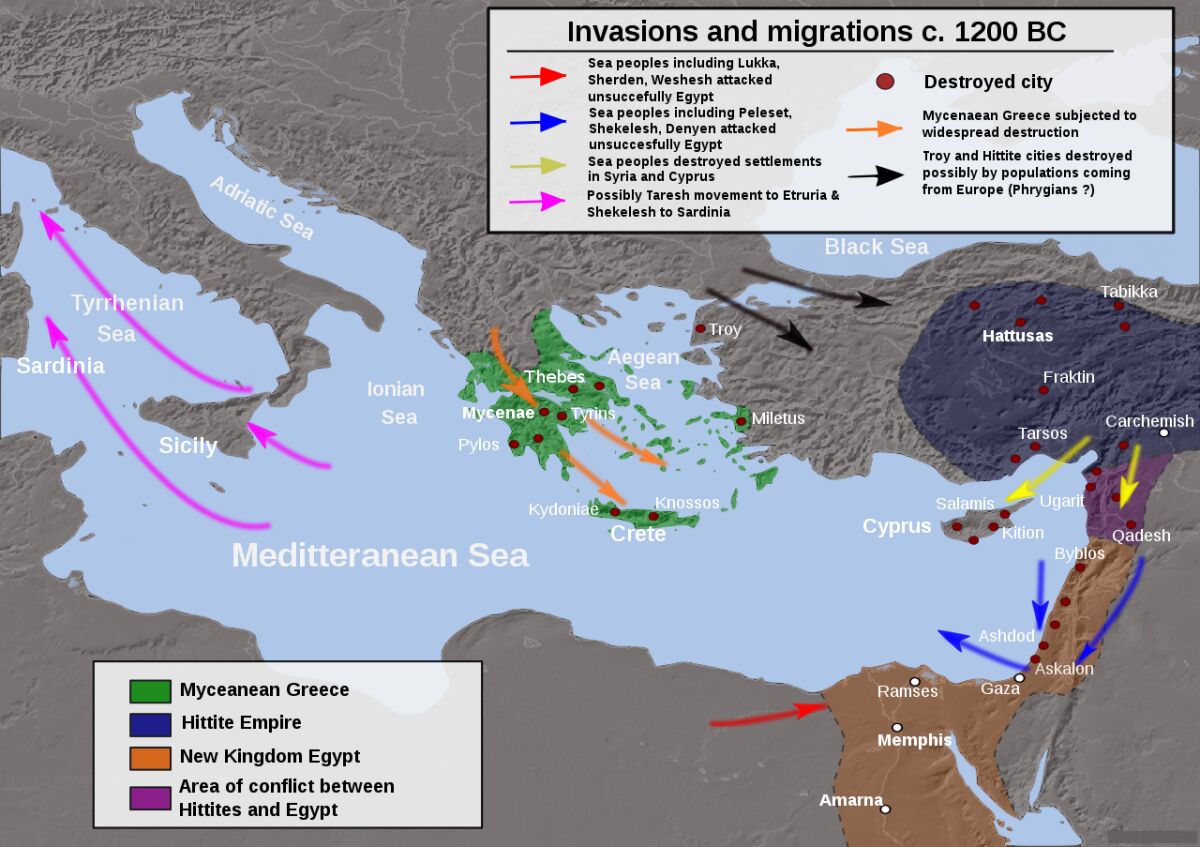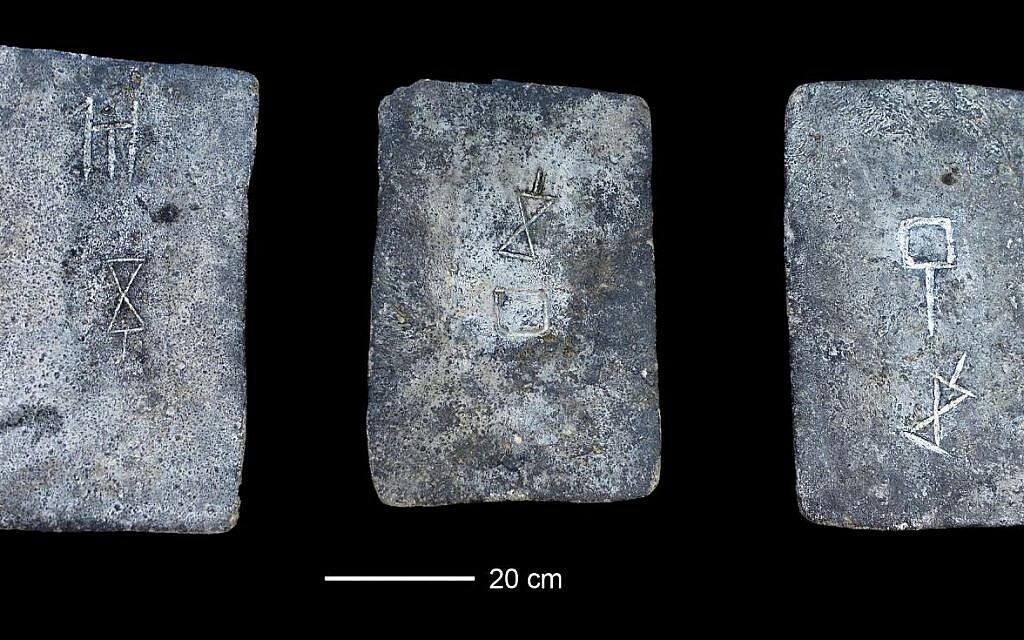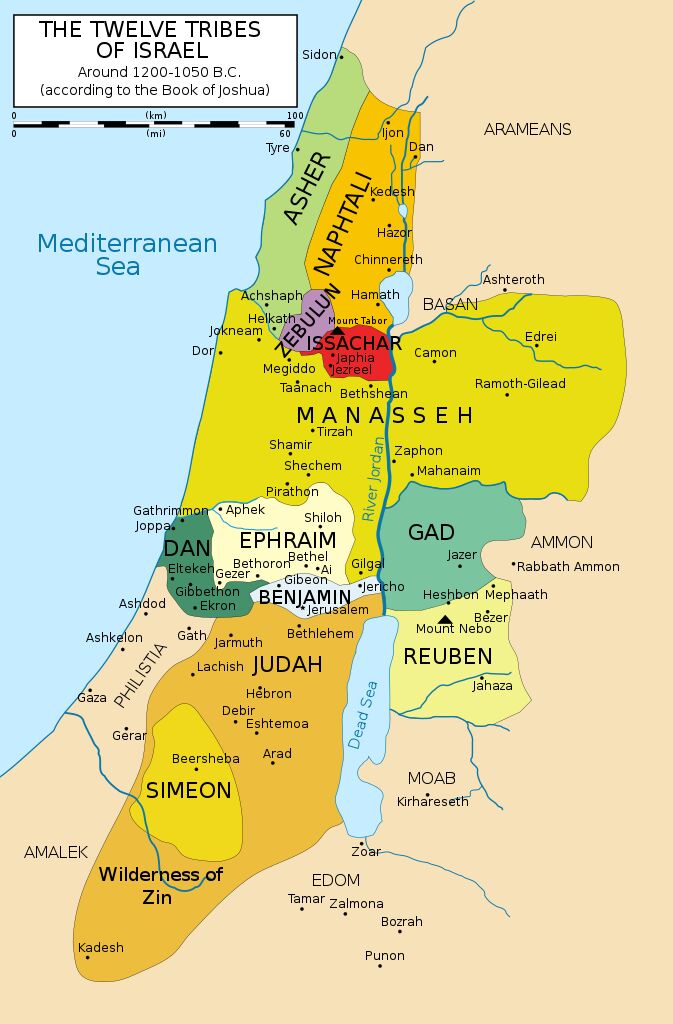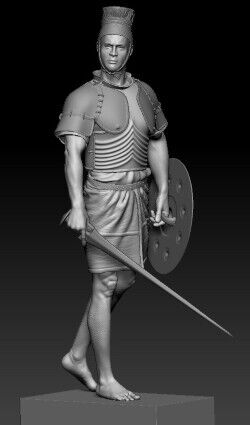Were the Seafaring Denyen the Tribe of Dan?
The Sea Peoples were a confederation of allied tribes who attacked Egypt, Anatolia and the Levant in the early-to-mid-12th century b.c.e. The identity and origin of this confederation’s members have been of great interest to archaeologists and historians for decades.
The early 12th century b.c.e. was a time of tumult, initiating a period called the Bronze Age Collapse. The Sea Peoples were one major factor in this collapse, as they attacked various civilizations in Egypt, Anatolia and the Levant, who were already weakened by other factors. An inscription from Pharaoh Ramses iii at Medinat Habu states of these people, “No land could stand before their arms: from Hatti, Qode, Carchemish, Arzawa, and Alashiya on, being cut off at one time.”
Ramses iii listed the names of the Sea Peoples on the walls of his temple at Medinet Habu. Of particular interest among these tribes is one named Denyen. The identity and origins of the Denyen people have been much debated.

Israeli archaeologist Yigael Yadin proposed that these Denyen people were linked with the Israelite tribe of Dan (see his 1968 journal article, “And Dan, Why Did He Remain in Ships,” here). Historians like Othniel Margalith (The Tribe of Dan: The Sea Peoples in the Bible), Matthew Korpman (“Dan Shall Judge: The Danites and Iron Age Israel’s Connection with the Denyen Sea People”) and Michael Astour have agreed with Yadin’s proposition. However, Yadin’s proposition has come under intense fire from archaeologists who do not consider evidence within the Bible worthy of consideration, and from those adhering to a minimalistic view of the historical size and impact of the tribes of Israel. Mark Walter Bartusch described Yadin’s theory as “speculative.” Gregory Mobley has said that the relationship between these two peoples is a “conundrum.” These historians cannot disprove the theory, yet they seek to discredit it.
Is there archaeological and biblical evidence to support Yadin’s proposition that the Denyen and the tribe of Dan are related entities?
First of all, how does the Bible describe the tribe of Dan at the time that these Denyen were pillaging the coasts of Egypt and the Levant? According to biblical chronology, the tribes of Israel (including Dan) entered the Promised Land around 1400 b.c.e. (according to 1 Kings 6:1 and several other well-established chronological markers). The Sea Peoples, in turn, are believed to have attacked Egypt in about 1177 b.c.e. in what is known as the Battle of Djahy, where they were finally destroyed in a pyrrhic victory by Ramses iii. What chronological biblical events, then, surround this event in the early 12th century?

The fourth and fifth chapters of the book of Judges recount the story of Deborah and Barak and their war with Jabin, King of Canaan, and Sisera, his captain. This battle, per internal biblical chronology, can be placed sometime around 1200 b.c.e. In Judges 5, Deborah and Barak sing of the victory they won over Jabin and Sisera.
Deborah and Barak attempted to unite all Israelite forces under one banner to fight their oppressors, but not all of the tribes of Israel responded to their call. In Judges 5:17, Deborah laments, “why did Dan remain in ships?” (King James Version; other translations use the word “sojourn”). The tribe of Dan did not rally to fight against Jabin and Sisera because they were preoccupied at sea. This scripture indicates that the tribe of Dan was a seafaring tribe, with their primary interests outside of their home territory in Israel. The use of the word “remain” indicates that Dan’s seafaring endeavors were already well known and established for some time.

Archaeological discoveries show that Israel, during this period, was involved in a significant degree of maritime trade; one recent discovery from this time period, at the port site of Haifa, revealed tin ingots mined from as far away as Cornwall, England. Judges 5:17 indicates that chief among the Israelite maritime merchants was the tribe of Dan (as well as an inference toward the tribe of Asher, a tribe actually described in the context of metallurgy—see Deuteronomy 33:25).
One theory for why Egyptian inscriptions do not include any detailed information about the origins of the different tribes within the Sea Peoples confederation is that the tribes needed no introduction at the time. Clearly, the Denyen would have been very well known at this time, particularly if they were popular merchants in the region. Studies have shown that these Denyen (also called Danuna) people came from a region of the Levant, not far from the northern archaeological site of Tel Dan (one of the tribe of Dan’s “capital cities,” described in Judges 18; read “Where Did the Kings of Danuna of EA 151 Rule?” by Zsolt Simon for more detail). Matthew Korpman wrote of this, saying, “In fact, the only area unoccupied by Sea Peoples which could have been occupied by the Denyen is the area which Joshua and Judges indicate that the tribe of Dan resided.”

Naturally, one chief piece of evidence serving to correlate the Denyen with the tribe of Dan is their names. The Bible gives insight into a peculiar feature of the tribe of Dan: that their tribal name would repeatedly pop up wherever Danites could be found. In Genesis 49, the patriarch Jacob prophesied the futures of all of his sons and their descendants. Jacob said of Dan, “Dan shall be a serpent in the way” (verse 17). The term “in the way” can also be translated “path.” Thus the scripture could also be translated, “Dan shall be a serpent’s path.” This scripture, alongside others, indicates that the activities of the tribe of Dan would leave a path that could be easily identified and followed. Biblical history proves that this path was marked by Dan’s name—examples include the conquering of Laish and naming it Dan (Judges 18:29), the renaming of the Kirjath-Jearim area Mananeh-Dan (Judges 18:12), and the northern territory of Dan-Jaan (2 Samuel 24:6). Of course, the names Denyen and Dan are clearly concomitant, which is emblematic of the tribe of Dan. (Even the aforementioned territory Dan-Jaan is remarkably similar in name to Denyen—better pronounced Dan-Yaan.)

Therefore, we are left with a burgeoning amount of evidence supporting Yadin’s proposition that these two groups were strongly affiliated. Both groups were active at the same time, both were aboard ships in the eastern Mediterranean Sea, both were from the Levant, both would have been well known and thus did not need introduction or description, and both carry a variation of the name “Dan,” as per Jacob’s prophecy that Dan’s descendants would. Therefore it could be considered highly improbable that these two entities were not closely linked, or even one and the same. Also notable is the peculiar fact that the tribe of Dan is one of the largest Israelite tribes at the time of the Exodus (Numbers 2, 26), yet sometime following the period of the judges, the tribe almost entirely disappears from view. Could this have been due to their seafaring endeavors?
Historians who disregard biblical evidence out of hand struggle to identify this tribe of the Sea Peoples. Yet the body of evidence showing affiliation between the Denyen and the tribe of Dan reveals that an open mind, willing to consider the biblical narrative alongside factual archaeological study, can provide historians with a deeper and more thorough understanding of ancient history.